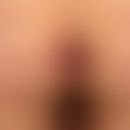Synonym(s)
DefinitionThis section has been translated automatically.
Collagens are structural proteins from fibre-forming protein structures. Collagens are the most common proteins in the human body, accounting for over 30% of the total weight of all proteins. They are the organic component of bones and teeth and the essential component of cartilage, tendons, ligaments and skin. In the skin, collagens form 70-80% of the dry weight. Collagen I and collagen III, together with collagen XII and collagen XIV, are the main components of collagen fibres in the extracellular matrix of the skin.
General informationThis section has been translated automatically.
The different collagens are mainly formed in fibroblasts, chondroblasts, osteoblasts and odontoblasts. However, they are also produced in other cells.
The polypeptide chains of the collagens are synthesized by the ribosomes of the rough endoplasmic reticulum of the producing cells and transported into the lumen of the endoplasmic reticulum. They are present in the form of larger precursor molecules, the pro-alpha chains, which are provided with N- and C-terminal propeptides.
Individual proline and lysine residues are hydroxylated in the endoplasmic reticulum. The formation of disulfide bonds between the C-terminal propeptides initiates triple helix formation. 3 pro-alpha-chains form a three-stranded helix molecule, the procollagen, via hydrogen bonds.
The molecules are released into the extracellular space by exocytosis using secretory vesicles. Immediately after release from the cell, the propeptides are cleaved by procollagen peptidases. The collagen molecule is called tropocollagen in this phase. Subsequently, individual tropocollagen molecules assemble to form collagen fibrils (fibrillogenesis).
In the fibrils, adjacent collagen molecules are not arranged flush with each other, but are offset from each other by 67 nm, i.e. by about one fifth of their length. As a result of this arrangement, electron microscopic images of collagen fibrils show transverse banding.
This banding pattern is repeated every 67 nm (234 amino acids) and is called the D-period. This divides the alpha chains into 4 homologous regions D1-D4. The collagen fibrils are ordered polymers that can become many micrometers long in mature tissue. They are often grouped together into larger, cable-like bundles called collagen fibrils.
In tendons, type I collagen fibrillae have a diameter of 50-500 nm, in the skin 40-100 nm and in the cornea (the cornea of the eye) 25 nm. The fibrillogenesis of collagen is often regulated by small proteoglycans rich in leucine, so that fibrils with a defined diameter and arrangement can develop in the corresponding tissues.
The mature collagen consists of helical peptide chains, which untypically have a left-hand helix. 3 of these helices, which can form hydrogen bonds with each other, wrap around each other to form a right-handed superhelix. By definition, only tripelhelical molecules of the extracellular matrix (ECM) are called collagens. The dense winding is decisive for the high tensile strength of collagen fibres. Collagen fibres are not stretchable. The fibres can carry weights up to ten thousand times their own weight.
You might also be interested in
OccurrenceThis section has been translated automatically.
Currently, 28 different collagen types are known (type I to XXVIII). In addition, there are at least ten other proteins with collagen-like domains. The collagens are divided into several subgroups.
- Fibrillar collagens: collagens of type I, II, III, V and XI.
- Non-fibrillar collagens:
- Reticular collagens: type IV collagens (lamina densa of the basement membrane), VIII and X.
- FACIT (fibril-associated collagens with interrupted triple helices): Type IX, XII, XIV, XXI, XXII collagens.
- String-of-pearls collagens: collagen type VI
- Anchoring fibril-forming collagens: collagen type VII
- Mulitplexins (Multiple Triple - Helix - Domains with interruptions): Collagens type XV, type XVIII
- Transmembrane collagens: type XIII, XVII, XXIII and XXV collagens.
The five most common types of collagen are:
- Type I: skin , tendons , vessels, organs, bone (main component of the organic part of bone).
- Type II: cartilage (main component of collagenous cartilage)
- Type III: reticulate (main component of reticular fibers, usually found next to type I collagen)
- Type IV: forms basal lamina, the epithelial-secreted layer of the basement membrane
- Type V: cell surface, hair and placenta
ClinicThis section has been translated automatically.
Collagens of the human organism with associated diseases (table varies according to Cristina Has 2018)
- Collagen I (genes: COL1A1/COL1A2) (dermis, collagen fibers; associated diseases are: osteogenesis imperfecta type I-IV, Ehlers-Danlos syndrome; infantile cortical hyperostosis.
- Collagen II (gene COL2A1); associated diseases are: Hypochondrogenesis, Achondrogenesis type II, Stickler syndrome, Congenital spondyloepiphyseal dysplasia, Spondyloepimetaphyseal dysplasia type Strudwick, Knee dysplasia.
- Collagen III (gene: COL3A1); papillary dermis, vessels, collagen fibers; associated diseases are: acrogeria, Ehlers-Danlos syndrome.
- Collagen IV(COL4A1, COL4A2, COL4A3, COL4A4, COL4A5, COL4A6); reticular collagen type; component of the basal lamina and the lens of the eye; also serves as part of the filtration system in capillaries and the glomeruli of the nephron; associated diseases are: Alport syndrome, Goodpasture syndrome, thin basement membrane type nephropathy; poerencephaly.
- Collagen V (gene: COL5A1/COL5A1); fibrillar collagen, component of the interstitium, placental tissue and dermoepidermal junction zone; mostly associated with intermediate tissues containing collagen type I; associated diseases are: Ehlers-Danlos syndrome.
- Collagen VI (genes: COL6A1/COL6A2/ COL6A3/ COL6A5); bead-like collagen, component of microfibrils; associated diseases are: Bethlem myopathy, congenital muscular dystropathy.
- Collagen VII (gene: COL7A1); forms anchoring fibrils underneath the basal basement membrane; expression by keratinocytes, mast cells and endothelial cells, vascular basement membrane in the dermis; associated diseases are: Fuchs' corneal dystrophy, Bart syndrome, epidermolysis bullosa acquisita (AK against collagen VII)
- Collagen VIII (genes: COL8A1, COL8A2); short-chain; integral component of the subendothelial layer of connective tissue cells in blood vessels and the Descemet's membrane of the cornea; migration and proliferation of smooth muscle cells in the tunica media of blood vessels; associated diseases: posterior polymorphic corneal dystrophy, Fuchs endothelial dystrophy 1.
Collagen IX (genes: COL 9A1-A3) FACIT1; component of hyaline cartilage and vitreous body; mostly with tissues containing collagen type II and XI; associated diseases: multiple epiphyseal dysplasia (type 2,3 and 6).
Collagen X (gene: COL 10A1); short-chain; component of chondrocytes in hypertrophic zone 2; associated diseases: metaphyseal chondrodysplasia type Schmid, spondylometaphyseal dysplasia type Sutcliffe.
Collagen XI (COL11A1, COL11A2); fibrillar; component of cartilage; associated diseases: Stickler syndrome type 2, Marshall syndrome, Weissenbacher-Zweymüller phenotype, oto-spondylo-megaepiphyseal dysplasia
Collagen XII (genes: COL12A1); anchoring fibril-forming collagens, in the dermis associated with collagen I; regulates the interactions between collagen I and the extracellular matrix; associated diseases are: Bethlem myopathy, congenital muscular dystrophy.
- Collagen XIII (gene: COL13A1) skin and other tissues; associated diseases: congenital myasthenia
- Collagen XIV (genes: COL14A1); anchoring fibril-forming collagen in the dermis, regulates fibrillogenesis; collagen XIV was originally called undulin, as it appeared under the light microscope in characteristic uniformly wavy fibers running parallel to each other. Collagen XIV is mainly synthesized by fibroblasts. However, other cells, such as fat cells (e.g. hepatic stellate cells), endothelial cells, osteoblasts or endoneural and perineural cells of peripheral nerves also possess this ability; associated disease:Palmoplantar keratoderma, punctate type I (PPKP1A; OMIM: 148600), also called keratosis punctate palmoplantaris type Buschke-Fisher-Brauer.
- Collagen XV (genes: COL15A1) Multiplexin; is able to connect the basement membrane with the loose connective tissue; stabilizes microvessels and muscle cells in the heart and skeletal muscle; can inhibit angiogenesis; associated diseases are not known.
- Collagen XVI (Gene: COL16A1) Anchoring fibril-forming collagen; expression by keratinocytes and fibroblasts, associated with collagen I; induces integrin-mediated cellular responses, such as proliferation; promotes the life span of intestinal subepithelial myofibroblasts (ISEMF) in the intestinal wall; associated diseases are not known.
- Collagen XVII (genes: COL17A1); MACIT; collagen XVII is expressed by keratinocytes; plays an important role in the integrity of hemidesmosomes and in the attachment of keratinocytes to the underlying basement membrane; associated diseases: epidermolysis bullosa junctionalis. Antibodies against type XVII collagen (BP180; this antibody is directed against an extracellular domain immediately adjacent to the cell membrane of the basal keratinocyte) are detected in bullous pemphigoid.
- Collagen XVIII (genes: COL18A1) Multiplexin, expression by fibroblasts and endothelial cells; cleavage product is endostatin; plays a role in the organization of the basement membranes; associated diseases: Knobloch syndrome).
- Collagen XIX (genes: COL19A1) FACIT; mostly located in the vascular, neuronal, mesenchymal and epithelial basement membrane; cross-bridge between fibrils and other extracellular matrix molecules; associated diseases are not known.
- Collagen XX (Gene: COL20A1) FACIT; mostly located in the epithelial layer of the cornea, embryonic skin, xiphoid process and in the tendon; associated diseases are not known.
- Collagen XXI (genes: COL21A1) Anchoring fibril-forming collagen, expression together with collagen I, maintenance of the integrity of the extracellular matrix; associated diseases are not known.
- Collagen XXII (genes: COL22A1); FACIT; involved in cell adhesion of ligands in multilayered epithelia and in fibroblasts; associated diseases are not known.
- Collagen XXIII (genes: COL23A1); MACIT; located in the epidermis and in other epithelia such as in the tongue, intestine, lung, brain, kidney and cornea; interacts with integrin α2β1; associated diseases are not known.
- Collagen XXIV (genes: COL24A1); mainly expressed in bone tissue; associated diseases are not known.
- Collagen XXV (genes: COL25A1); MACIT; assembles amyloid fibrils with protease-resistant aggregates and can bind heparin; associated diseases are not known.
- Collagen XXVI (genes: COL26A1); is often associated with the formation of nasal polyps in the nasal cavity; associated diseases are not known.
- Collagen XXVII (genes: COL27A1); located in the basement membrane of keratinocytes in hemidesmosomes type I, which essentially functions as an adhesion molecule and surface receptor also in multilayered epithelia; associated diseases are: Steel syndrome (OMIM:615155), a rare genetic bone disease and fibrochondrogenesis 1, a severe, autosomal recessive, short-limbed skeletal dysplasia.
- Collagen XXVIII (genes: COL28A1) is mainly located in the sciatic nerve and at the basement membrane of some Schwann cells; integral part of the Ranvier cord and surrounds non-myelinated glial cells; associated diseases are not known.
LiteratureThis section has been translated automatically.
- Bella J (2016) Collagen structure: new tricks from a very old dog. Biochem J 473:1001-1025.
- Has C (2018) Connective tissue diseases: basics. In: G. Plewig et al (Ed.) Braun-Falco`s Dermatology, Venerology and Allergology, Springer Reference Medicine p. 879
- Shoulders MD ET AL: (2009) Collagen structure and stability. Annu Rev Biochem 78:929-958.





